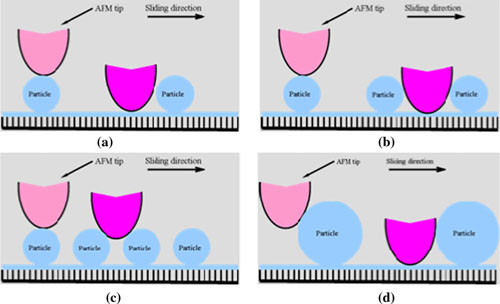Many studies have shown that surface roughness affects the adhesive and frictional forces. In miniaturized systems, the adhesion contribution to friction can no longer be neglected because of the large surface area-to-volume ratio of structures and the increased surface smoothness. Actually, the adhesive force and frictional force are two of the main issues affecting the reliability of miniaturized devices involving contact interfaces. Therefore, a fundamental understanding of adhesive and frictional behaviors and controlling the adhesion and friction at nanoscale level are of great scientific and technological significance.
Researchers at State Key Laboratory of Solid Lubrication, Lanzhou Institute of Chemical Physics (LICP), Chinese Academy of Sciences (CAS), have created nanoparticle-textured surfaces (NPTS) by self-assembling Au NPs on the silicon surfaces and investigated the effects of coverage ratio, texture height, and packing density on the nanoscale adhesion and friction of the NPTS.
 |
|
Schematic diagram of the contact between the AFM tip and NPTS |
The NPTS significantly reduced the adhesion compared to the smooth surface, attributed to the reduced real contact area. The adhesion of NPTS is mainly dependent on the coverage ratio of NPs rather than the texture height and higher coverage ratio result in smaller adhesive force. The friction of NPTS is mainly dependent on the spacing between asperities. The lowered frictional force was obtained when the spacing between asperities is less than the size of AFM tip, because of the effectively reduced real area of contact between the AFM tip and the NPTS surface.
This study provides unique opportunities for fundamental nanoscale research on the adhesive and frictional phenomena of NPTS and guidance for further fundamental research study on nanotribology.
The work has received support from the National Natural Science Foundation of China . The findings have been published in Tribol Lett(Tribol Lett(2012) 46:65–73) .


